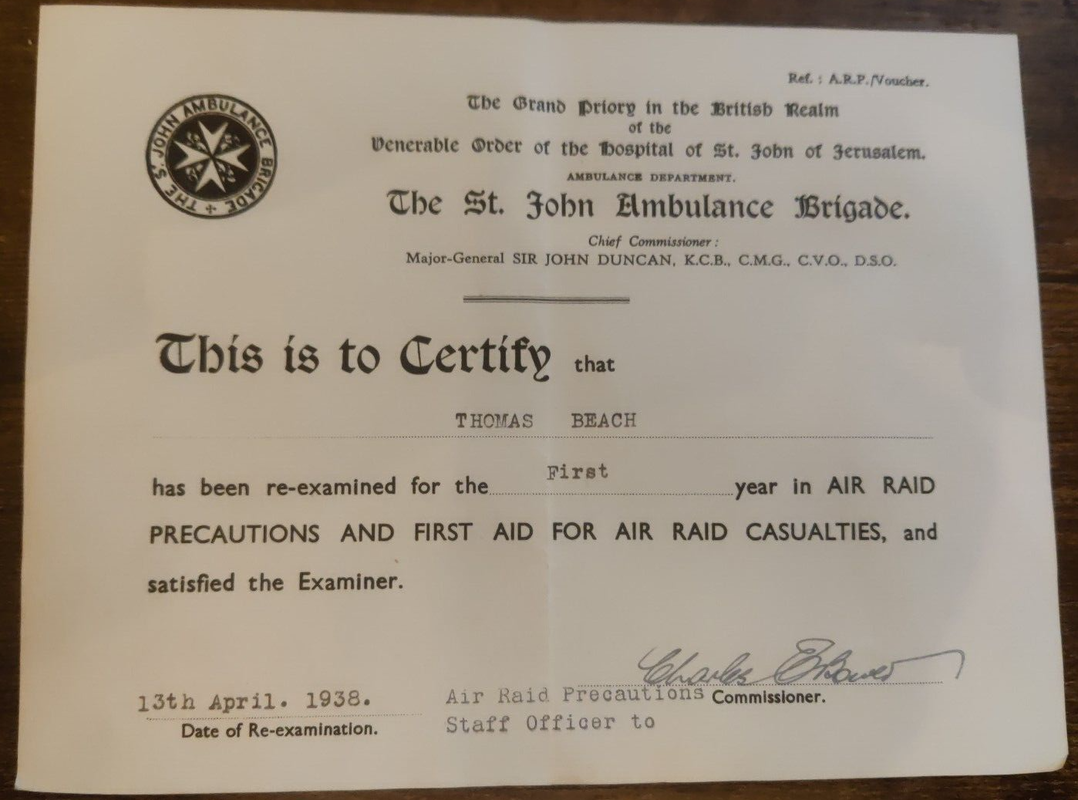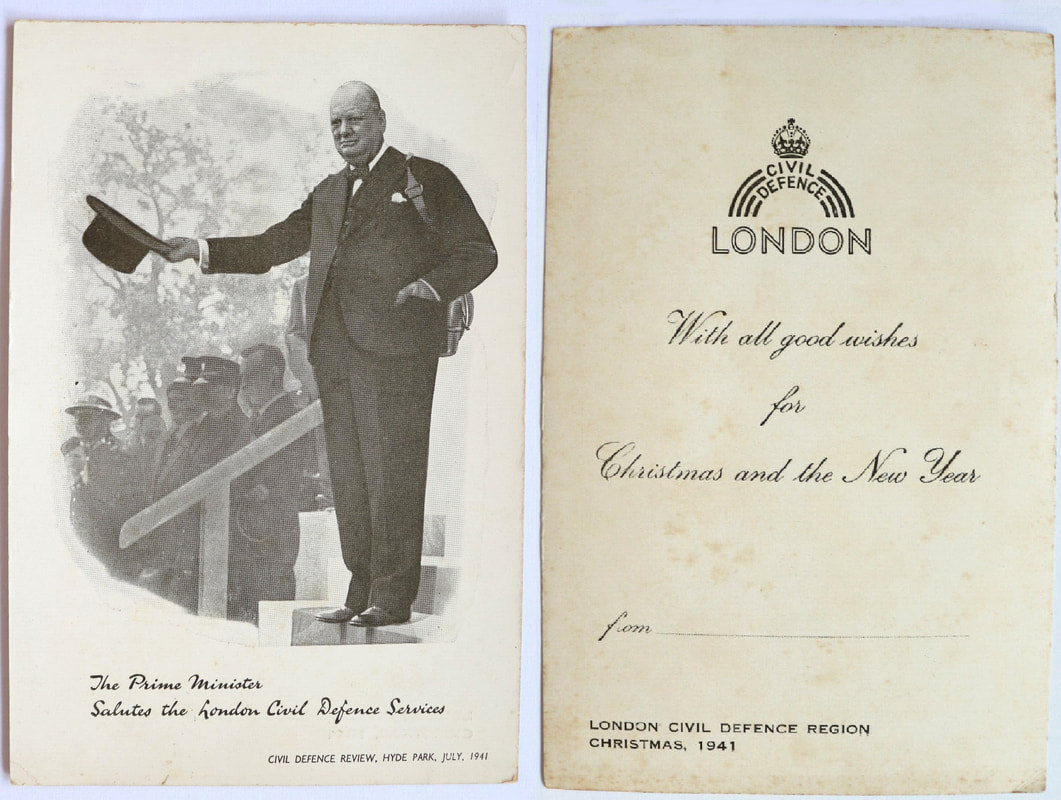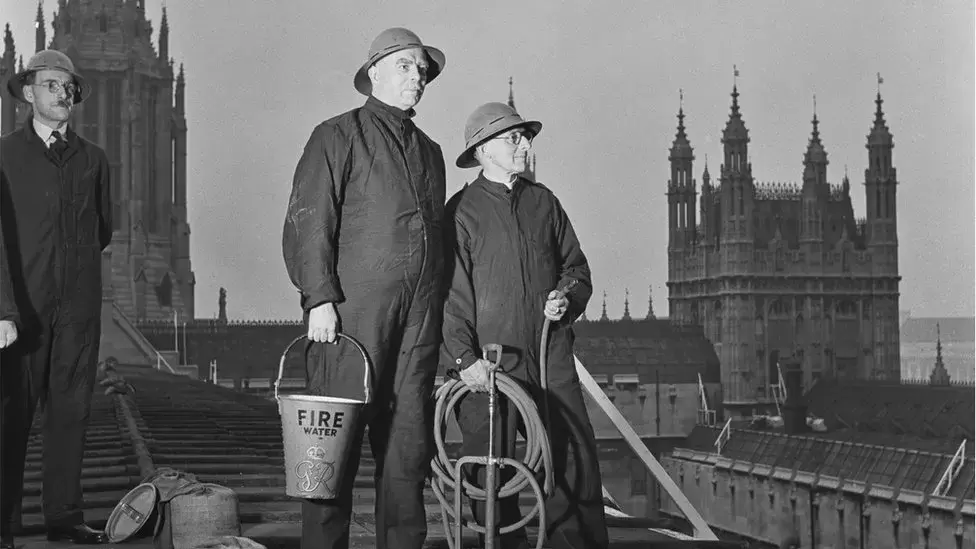|
The St. John Ambulance Brigade offered training in Air Raid Precautions (ARP) and First Aid for Air Raid Casualties to its members. This would allow uniformed St John members to wear a yellow ARP badge on the lower right sleeve of their uniform.
The distinction between the St. John Ambulance Brigade and the St. John Ambulance Association, was the brigade provided uniformed first aiders at events, whilst the association trained anyone in first aid.
0 Comments
I don't believe I have ever seen a women's ARP Pattern 71 tunic with an I.O. (Incident Officer) sleeve badge but the below course certificate shows that women did indeed attend and pass the course. The certificate was amongst a number of items including other paperwork and insignia that appeared on eBay belonging to a Miss Lilian Taylor from Pinner.
Usually the warrant or appointment cards issued by the local authority to members of the ARP/CD services were a small bi-fold, linen-backed card. This example from Bedfordshire is a simple card. I do enjoy seeing the lovely signatures of the ARP Controllers.
The below Christmas and New Year greeting postcard reached just over £100 on eBay recently (September 2023). The postcard features a photograph of Prime Minister Winston Churchill saluting a Civil Defence parade that took place in Hyde Park in July 1941 (there is film of this parade on YouTube - see below). Over the years, I've seen a great number of items made from the stone retrieved from the bombed Houses of Parliament. There are plenty of stone bookends that feature a motif of Winston Churchill. Donations from the sale of items were sent to the Red Cross & St. John Fund. It's rare, however, to see the original letter that was sent with a stone (in this case a letter "V") and signed by Vincent Baddeley. Over the course of the second world war the Palace of Westminster was damaged in air raids on 14 different occasions.
On the night of 10 to 11 May 1941, German high explosive (HE) and incendiary bombs (IBs) caused severe damage to the Palace of Westminster. The roof of Westminster Hall and the Commons Chamber were set alight. The fire services were severely stretched by the conflagrations and it would have been impossible to save both, so the decision was made to concentrate on saving the medieval Westminster Hall. The fire completely gutted the Commons Chamber (whose ceiling collapsed) and the Members' Lobby. In 1943, Winston Churchill decreed that the Commons Chamber must be "restored in all essentials to its old form, convenience and dignity" and rebuilding work began in May of 1945. On 26 October 1950, the new chamber was opened in the presence of King George VI. |
Please support this website's running costs and keep it advert free
Categories
All
Archives
May 2024
|
|
|
Copyright Craig Smith © 2018–2024
|






 RSS Feed
RSS Feed